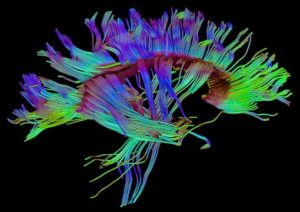![]()
Negative self image is not just a cognitive or emotional issue. The physical aspects of negative self image are just starting to be recognized, but not enough, in my opinion! Nothing could be more important since it’s impossible to “get out of your body”.
You can use your body to tap into confidence instantly. Use your body, with all of it’s senses, to pay attention to your environment instead of yourself. It does help if you are on the beach! But it works even when you are not. You are instantly “allowed to take up space” that you may have been depriving yourself of.
This external focusing of attention has an interesting side effect that I’m beginning to understand better: it quiets down physicalized self-judging thoughts. The hidden part of your mind that is always trying so hard to manage your body. The minute I first bring a person’s attention to their body, I can see the tightening and confusion on a physical level.
These are the kinds of things people say when I ask them why they have come to study with me:
“My belly sticks out so I’m sucking it in.”
“I have terrible posture.”
“My back is really rounded, so I’m trying to lift it up, but I can’t breath when I do that.”
The more physical skill a person has in any particular field, these kinds of thoughts get more complex and multi-layered, and the confidence killing nature of them gets masked behind that skill. Often these things are why people come to study with me – because they are confused, anxious, and not feeling confident that they are on the right track.
Normally no one would say that they don’t have confidence in their body, but it’s implied that somehow, their body is not quite right, not as it should be. That it needs improvement. And most movement practice starts from this assumption! So the very thing that we need the most – movement – fills our nervous system with even more self-critical energy.
I think that people open up when they are allowed to move. This opening, or expansiveness, is the hallmark of confidence.
Unfortunately, most folks are unknowingly stiffening somewhere, for whatever reason. It could be conscious or unconscious. Yet, the exact moment that stiffening is perceived, I see over and over again that the person already knows how to ease up on themselves, and that in that exact moment movement occurs.
In that moment, the movement that arises is easy, confident, and freeing. The only problem is, this kind of movement can feel a bit unfamiliar, and it doesn’t match what you’ve been told you should be doing with your posture.
Without skilled guidance, you are likely to shut it down. You might experience negative self judging kind of thoughts like – “OMG my belly is sticking out” or “my shoulders are totally hunching forward now!” Even thought the movement feels good, it doesn’t match the self-image you have acquired.
Some people even feel that they are going to fall down without the familiar posture. And all of this might be happening so fast inside you that you don’t even recognize it. In my classes and lessons, you will receive skilled guidance. I will structure a space where these thoughts, and your internal physical response to them, simply are not happening. Together we create a space where you are free, yet supported, to take calculated risks in movement.
Once you have experienced this peaceful and dynamic state of being, I know you will be able to learn how to do it for yourself.
The Alexander Technique practice of awareness without judgement can be pretty radical, if this is where you come from. Honestly, I think hidden negative physicalized self-talk plays a huge role in the loss of confidence in ourselves, which then gets overly pathologized.
Then we diagnosis: I need to improve my confidence! and we start doing a million things to address that without ever getting down to the most basic level: how we experience and relate to our bodies.
Some suggestions I found on the inter-webs this morning for how to deal with negative self image and “lack of confidence”:
– fake it (basically pretend you don’t feel the way you feel)
– get off social media (implying that you should simply ignore the culture in which you live that tells you your body is ugly for whatever reason, including all the systems of oppression that consider your existence problematic like racism, agism, fat hating, fear of ability differences etc)
– talk about your butt positively, as if you liked it (I kind of like this one!)
– say affirmations in the mirror
– volunteer for a charity so you will feel good about yourself
– pretend you feel confident by smiling, sitting up straight, and looking people in the eye
None of which are going to address the root problem! Last, but not least…whew:
– Exercise/move
Well, yes. Move! But it’s your attitude towards your movement that is doing to heal you.
You can change how you move yourself. That will change everything else.

